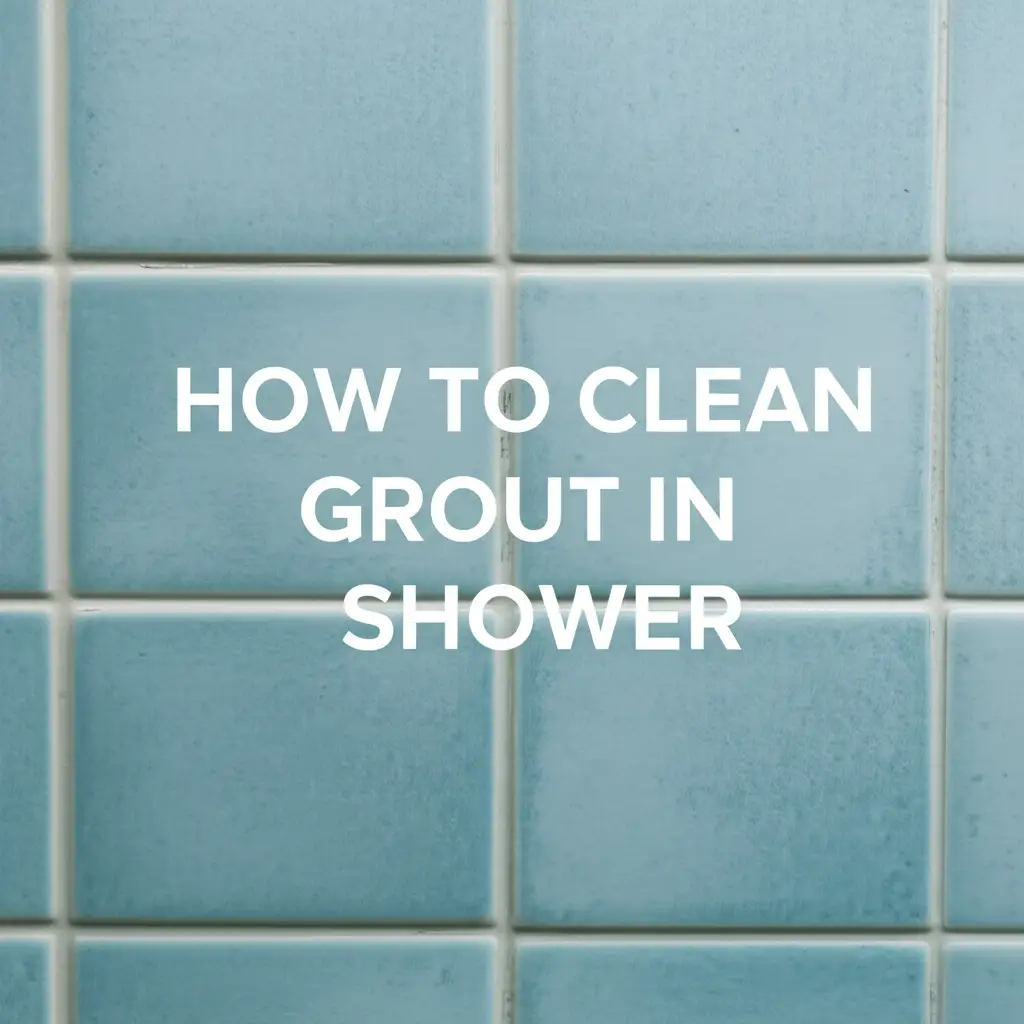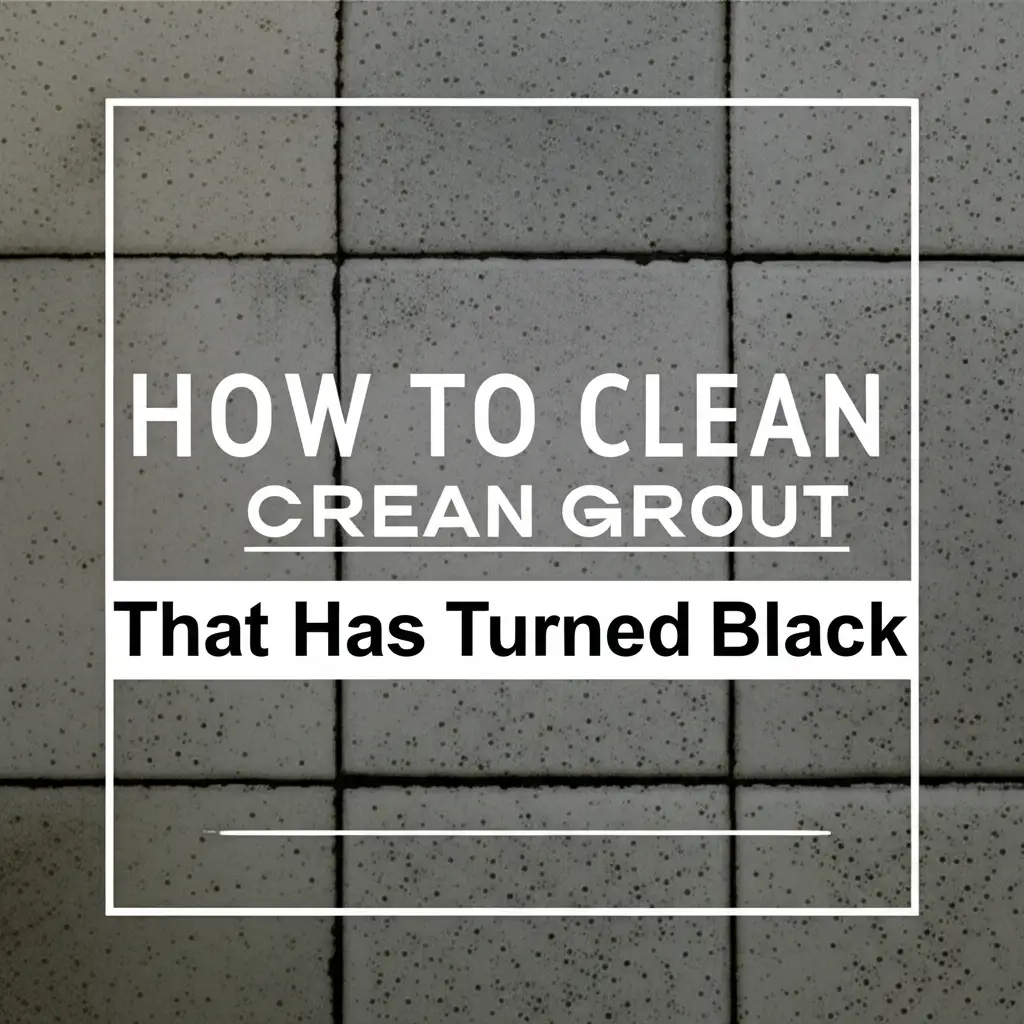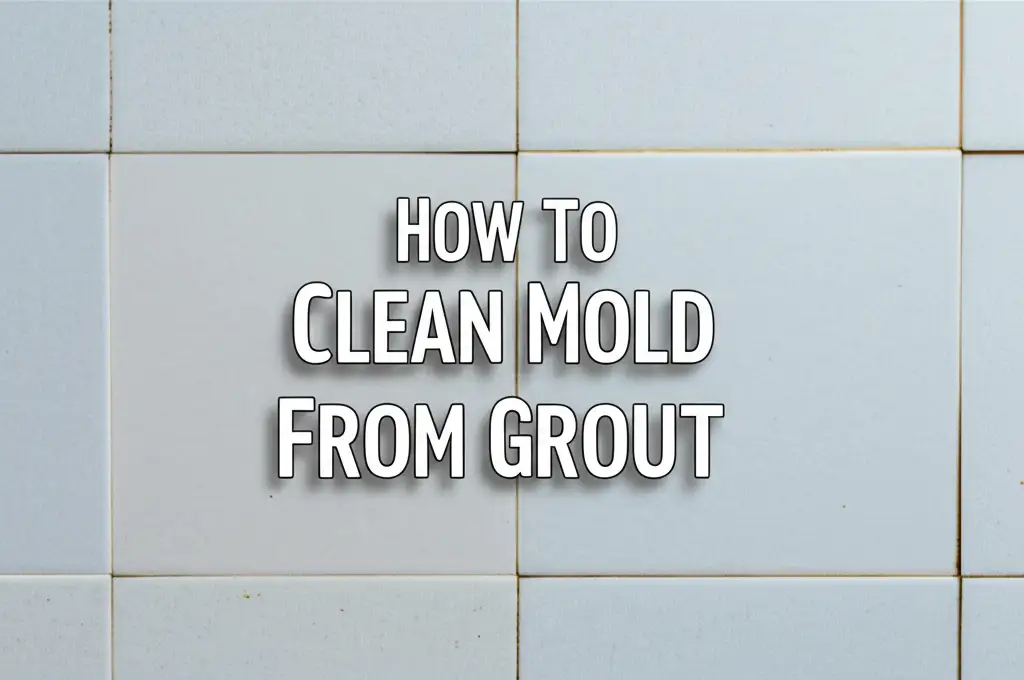· Shower Maintenance · 19 min read
How To Clean Grout In Shower

Clean Grout In Shower: Your Ultimate Guide
A clean shower brings a fresh feeling to your bathroom. Yet, discolored grout lines often stand out. Dirty grout makes an otherwise spotless shower look unkempt. Many people struggle with keeping this area bright. Do not worry; cleaning grout is a task anyone can master.
This guide helps you learn how to clean grout in shower areas. We cover simple home remedies and stronger methods for tough stains. You will discover the right tools and supplies. We also offer steps for maintaining clean grout. This article gives you practical advice for a sparkling clean shower.
Takeaway:
- Understand why shower grout gets dirty.
- Gather the right tools and cleaning solutions.
- Apply natural cleaning methods like baking soda and vinegar.
- Tackle tough stains with commercial cleaners or steam.
- Follow a step-by-step cleaning process for best results.
- Implement maintenance tips to keep grout clean longer.
- Avoid common cleaning mistakes.
To clean grout in your shower effectively, mix baking soda with water to form a paste. Apply it to the grout lines and let it sit. Scrub the grout with a stiff brush. Rinse the area thoroughly with water. For tough stains, use hydrogen peroxide or a specialized grout cleaner.
Understanding Shower Grout: Why It Gets Dirty
Shower grout often looks dirty. This is a common problem in many bathrooms. Grout is a porous material. This means it has tiny holes. These holes trap dirt, soap scum, and moisture. Over time, these trapped elements lead to discoloration.
The shower environment adds to the problem. It is a warm, wet place. This condition is perfect for mold and mildew to grow. Mold and mildew cause dark stains. These stains appear black, pink, or orange. Hard water also leaves mineral deposits. These deposits make grout look dull.
Common Grout Stains
You see different types of stains on shower grout. Each stain has a specific cause. Knowing the cause helps you clean it better.
- Mold and Mildew: These are living organisms. They thrive in damp, dark places. They appear as black, green, or pink spots. You often find them in corners or along tile lines. Dealing with mold needs specific methods. You can learn more about tackling severe discoloration by reading how to clean grout that has turned black.
- Soap Scum: Soap scum is residue from soap and body oils. It mixes with hard water minerals. This creates a cloudy film. It looks white or grey. Soap scum builds up quickly in showers.
- Hard Water Stains: These are mineral deposits. They come from minerals in tap water. They look like white or chalky spots. Hard water stains are stubborn. They etch onto surfaces over time.
- Dirt and Grime: General dirt and grime collect over time. They wash off your body and get trapped in the grout. This makes grout appear dingy or brown.
Grout’s porosity means it absorbs these things. Regular cleaning helps. But deep cleaning is necessary for tough stains. Keeping grout clean makes your whole shower look new. This understanding forms the basis for effective cleaning. It helps us choose the right cleaning method.
Essential Tools and Supplies for Grout Cleaning
Cleaning shower grout needs specific tools and supplies. Having the right items makes the job easier. It also makes it more effective. You can find most of these items at home or a local store.
First, consider your personal safety. Grout cleaning involves chemicals and scrubbing. Protect your hands and eyes.
Personal Protective Equipment (PPE)
- Rubber Gloves: These protect your hands. Cleaning solutions can irritate skin. They also protect from germs.
- Safety Glasses or Goggles: Splashing is common during scrubbing. Eye protection stops chemicals or debris from entering your eyes.
- Ventilation: Open windows or turn on the exhaust fan. Good airflow prevents fume buildup. This is very important when using strong cleaners.
Cleaning Tools
- Stiff-Bristled Brush: This is a key tool. A grout brush has narrow, stiff bristles. It fits into grout lines. It lets you apply pressure directly. An old toothbrush can work for small areas. You can also use a small scrub brush.
- Spray Bottles: These help apply liquid cleaners evenly. You can mix DIY solutions in them. They make application simple.
- Buckets: You need a bucket for clean water. Use it for rinsing. A second bucket can hold dirty water.
- Sponges or Rags: Use these for wiping surfaces. They also absorb excess cleaning solution. Microfiber cloths are good for drying.
- Vacuum or Broom: Use this to remove loose dirt before cleaning. This prevents muddy messes.
- Old Towels: Lay these on the floor to catch drips. This protects your bathroom floor.
Cleaning Solutions
You have many choices for cleaning solutions. Some are natural. Others are commercial products.
- Baking Soda: This is a gentle abrasive. It helps scrub away dirt. It also neutralizes odors. Using baking soda is a popular home remedy. Find out more about how to clean your shower using baking soda.
- White Vinegar: Vinegar is an acid. It cuts through soap scum and mineral deposits. Mix it with water for a gentler solution. Be careful using vinegar on natural stone. It can etch some surfaces. It’s often used with baking soda for a fizzing action. You can see how vinegar works in various cleaning tasks by checking out how to clean your shower doors with vinegar.
- Hydrogen Peroxide: This is a mild bleach. It helps whiten grout. It also kills mold and mildew. It is safer than chlorine bleach for most grout. Learn more about hydrogen peroxide for grout cleaning at how to clean grout with hydrogen peroxide.
- Dish Soap: A few drops added to other solutions help lift grease and grime. It acts as a surfactant.
- Oxygen Bleach (e.g., OxiClean): This is a powdered cleaner. It releases oxygen when mixed with water. It is good for tough stains and mold. It is generally safer than chlorine bleach for colored grout.
- Commercial Grout Cleaners: Many products exist. Choose one suitable for your grout type. Read labels carefully. Some are acid-based, others are alkaline. Make sure they are safe for surrounding tiles.
- Steam Cleaner: A steam cleaner uses hot steam. It loosens dirt and kills germs. This method avoids chemicals. It is very effective for deep cleaning.
Gathering these items before you start saves time. It makes the cleaning process smooth. Your shower grout will look much better.
DIY Grout Cleaning Methods: Natural Solutions
Many people prefer natural cleaning solutions. They are often safer for your home. They are also gentle on your skin. These methods use common household items. They work well for moderate grout stains.
Baking Soda and Vinegar Paste
This is a classic DIY cleaner. It creates a fizzing action that lifts dirt.
- Mix Baking Soda: Get a small bowl. Pour in about half a cup of baking soda. Slowly add a little water. Mix until it forms a thick paste. It should be the consistency of toothpaste.
- Apply the Paste: Spread the paste directly onto the grout lines. You can use an old toothbrush. Let it sit for 10-15 minutes. This gives it time to work.
- Spray with Vinegar: Fill a spray bottle with white vinegar. Spray the vinegar directly onto the baking soda paste. You will see it fizz and bubble. This reaction helps loosen dirt.
- Scrub the Grout: Use a stiff-bristled brush. Scrub the grout lines in small sections. Work in circular motions. Apply firm pressure. The fizzing action helps remove dirt.
- Rinse Thoroughly: Use clean water and a sponge or rag. Rinse the area completely. Remove all paste residue. You can also use a showerhead to rinse.
This method works well for general grime. It is also good for light mildew. For more details on this versatile cleaner, see how to clean your shower with baking soda.
Hydrogen Peroxide Power
Hydrogen peroxide is a mild bleaching agent. It helps whiten grout. It also kills mold and mildew. It is safer than chlorine bleach for most grout types.
- Direct Application: Pour hydrogen peroxide directly onto the grout lines. You can also spray it from a bottle.
- Let It Sit: Let the hydrogen peroxide sit on the grout for 10-15 minutes. For heavier stains, you can let it sit longer.
- Scrub: Use a stiff brush to scrub the grout. The peroxide helps lift the stains.
- Rinse: Rinse the area with clean water. Make sure to remove all peroxide residue.
Hydrogen peroxide is effective against black mold. It helps restore grout color. Find out more about its uses for grout cleaning at how to clean grout with hydrogen peroxide.
Lemon Juice and Salt Scrub
This method uses the acidic power of lemon juice. Salt acts as a gentle abrasive. This is a good option for small, targeted areas.
- Create the Mix: Squeeze fresh lemon juice into a bowl. Add enough salt to create a thick paste. The salt provides scrubbing power.
- Apply and Scrub: Apply the paste directly to the stained grout. Use a small brush or old toothbrush. Scrub gently.
- Let Sit and Rinse: Let the paste sit for 5-10 minutes. Rinse the area thoroughly with clean water.
Lemon juice is natural. But it is still an acid. Avoid using it on natural stone tiles. Always test any natural solution on a small, hidden area first. This checks for discoloration. These natural methods are often enough for regular cleaning. They keep your shower looking fresh without harsh chemicals.
Tackling Stubborn Stains: When DIY Isn’t Enough
Sometimes, shower grout stains are too tough for natural methods. Deep-seated mold, old soap scum, or heavy discoloration need stronger solutions. This section explores more potent cleaning options. Always wear proper protective gear when using these. Ensure good ventilation.
Oxygen Bleach Solutions
Oxygen bleach is a powerful cleaner. It is different from chlorine bleach. It does not contain harsh chlorine. It works by releasing oxygen when mixed with water. This oxygen breaks down organic stains. It is generally safer for colored grout.
- Mix the Solution: Follow product instructions. Typically, you mix oxygen bleach powder with hot water. Mix until the powder dissolves. It should form a paste or liquid.
- Apply and Dwell: Apply the solution directly onto the stained grout. Use a brush or sponge. Let it sit for 30 minutes to a few hours. For very stubborn stains, leave it overnight.
- Scrub and Rinse: Scrub the grout vigorously with a stiff brush. The oxygen bleach lifts the stains. Rinse the area completely with clean water. Ensure no residue remains.
Oxygen bleach is very effective against mold and mildew. It also whitens discolored grout. For more on tough grout stains, read our guide on how to clean grout that has turned black.
Commercial Grout Cleaners
Many commercial products exist. They are designed for specific grout problems. Some are acid-based. They dissolve mineral deposits and soap scum. Others are alkaline. They break down grease and organic stains.
- Acidic Cleaners: Use these for hard water stains and rust. They are not safe for natural stone tiles like marble. Test them first.
- Alkaline Cleaners: These work well on mold, mildew, and general dirt. They are usually safer for stone.
- Read Instructions: Always read the product label carefully. Follow all safety warnings. Note the recommended application time.
- Test First: Apply the cleaner to a small, hidden grout area. Check for any adverse reactions. This prevents damage.
- Apply and Scrub: Apply the cleaner as directed. Use a grout brush to scrub the stained areas.
- Rinse Thoroughly: Rinse the entire area with plenty of clean water. This removes all chemical residue.
Commercial cleaners can be strong. They provide a powerful solution when DIY methods fail. For comprehensive cleaning tips, including stronger options for tiles and grout, explore how to clean shower tiles and grout.
Steam Cleaning for Deep Dirt
Steam cleaners offer a chemical-free deep cleaning option. They use high-temperature steam. This steam loosens dirt, dissolves soap scum, and kills mold spores. The heat sanitizes the surface.
- Fill and Heat: Fill the steam cleaner with water. Turn it on and let it heat up.
- Direct Steam: Direct the nozzle of the steam cleaner onto the grout lines. Move it slowly. The steam penetrates the porous surface.
- Wipe and Scrub: As the steam works, wipe away loosened dirt with a cloth. Use a brush attachment on the steamer if available. Scrub any remaining tough spots.
- Dry: Allow the area to air dry. Or wipe it dry with a clean towel.
Steam cleaning is safe for all grout types. It avoids harsh chemicals. It is a good choice for people with sensitivities. It offers a powerful clean. These stronger methods help restore even the dirtiest shower grout.
Step-by-Step Guide to Cleaning Shower Grout Effectively
A systematic approach helps you clean shower grout efficiently. This guide covers the process from start to finish. Following these steps ensures a thorough clean. You will see a big difference in your shower’s appearance.
Step 1: Prepare the Shower Area
Preparation is important. It protects your bathroom and makes cleaning easier.
- Remove Items: Take out all bottles, sponges, and other items from the shower. Place them outside the shower area.
- Dry Sweep/Vacuum: Use a broom or small vacuum to remove loose hair, dirt, and debris. This prevents muddy messes during wet cleaning.
- Ventilate: Open a window. Turn on the bathroom exhaust fan. Good airflow is essential, especially when using cleaning solutions.
- Protect Surroundings: Lay old towels on the bathroom floor. This catches drips and prevents slips.
Step 2: Pre-Treat Heavily Stained Areas
For very dirty grout, pre-treatment helps. This loosens stubborn grime.
- Apply Pre-Treatment: Spray or apply your chosen cleaning solution directly onto problem areas. For black mold, use hydrogen peroxide or an oxygen bleach solution.
- Let It Dwell: Allow the solution to sit for 10-15 minutes. For deep stains, let it sit longer. This gives the cleaner time to penetrate the grout.
Step 3: Apply Your Main Cleaning Solution
Now, apply the cleaning solution to all grout lines.
- Choose Your Cleaner: Decide between natural solutions (baking soda paste, hydrogen peroxide) or commercial cleaners. Refer to earlier sections for options.
- Apply Evenly: Use a spray bottle for liquids. Spread pastes with a brush or sponge. Ensure all grout lines are covered.
- Allow Dwell Time: Let the cleaner sit on the grout. This “dwell time” is crucial. It allows the solution to break down dirt. Follow product instructions or let natural solutions sit for 15-30 minutes.
Step 4: Scrub the Grout Lines
This is the most labor-intensive part. Proper scrubbing technique is key.
- Use the Right Brush: Grab your stiff-bristled grout brush. An old toothbrush works for tight spots.
- Scrub in Small Sections: Work on one small area at a time. This keeps the cleaner from drying out.
- Apply Firm Pressure: Scrub back and forth along the grout lines. Apply firm, consistent pressure. You will see dirt lifting.
- Reapply if Needed: If an area dries or remains very dirty, reapply cleaner. Scrub again.
- You can learn more about effective scrubbing techniques for various surfaces, including grout, by visiting how to clean shower tiles and grout. Also, for those who wish to minimize scrubbing, there are methods discussed in how to clean shower tiles without scrubbing, which can be adapted.
Step 5: Rinse Thoroughly
Rinsing removes all loosened dirt and cleaning residue. This prevents new stains.
- Use Clean Water: Fill a bucket with clean water. Use a sponge or clean rag.
- Wipe Down: Wipe down all scrubbed grout lines. Rinse the sponge or rag often.
- Showerhead Rinse: If possible, use your showerhead to rinse the entire area. Start from the top. Let the water run until no suds or dirt remain. Ensure water does not collect at the bottom.
Step 6: Dry the Grout
Drying is important. It prevents new mold or mildew growth.
- Wipe Dry: Use a clean, dry microfiber cloth or old towel. Wipe down all grout lines.
- Ventilate: Keep the bathroom fan on. Let the area air dry completely. Good airflow speeds drying.
Following these steps provides a deep clean for your shower grout. It restores its appearance. Your shower will look much brighter.
Maintaining Clean Grout: Prevention is Key
Cleaning shower grout takes effort. Once your grout is clean, you want to keep it that way. Regular maintenance prevents heavy buildup. Prevention is easier than intensive cleaning. These habits save you time and effort in the long run.
Regular Cleaning Habits
Consistent light cleaning stops dirt from settling.
- Weekly Wipe-Downs: After a shower, quickly wipe down shower walls and grout lines. Use a squeegee on tiles. Wipe grout with a clean cloth. This removes moisture and soap residue.
- Gentle Cleaning Spray: Keep a spray bottle in your shower. Mix water with a little white vinegar and a few drops of dish soap. After your shower, spray the walls and grout lightly. Let it sit for a minute. Then rinse. This daily routine prevents soap scum and mildew.
- Light Scrubbing: Once a week, use an old toothbrush or a small scrub brush. Lightly scrub the grout lines with your daily cleaner. This lifts any fresh grime.
Grout Sealing
Sealing grout is a powerful preventive measure. Grout is porous. A sealer creates a protective barrier.
- What it Does: Grout sealer fills the tiny holes in grout. It makes the surface less absorbent. This prevents water, dirt, and mold spores from penetrating.
- Application: Apply grout sealer to clean, dry grout. Follow product instructions. You typically brush or spray it on. Then wipe off excess from tiles.
- How Often: Most sealers last 1-3 years. Check your sealer’s specific instructions. Reapply when water no longer beads on the grout surface.
- Sealing grout protects it. It also makes future cleaning much simpler.
Proper Ventilation
Good airflow is vital in bathrooms. It reduces moisture. Moisture causes mold and mildew.
- Use Exhaust Fan: Turn on your bathroom exhaust fan during showers. Keep it running for 15-30 minutes afterward. This removes humid air.
- Open Windows: If you have a window in your bathroom, open it after showering. This allows fresh air in. It helps dry out the space.
- Keep Shower Curtain Open: After showering, extend the shower curtain or open shower doors. This allows air to circulate. It helps the shower dry faster.
Wiping Down After Showers
This simple habit makes a big difference. It removes the moisture that mold loves.
- Squeegee Tiles: Use a squeegee on your shower tiles and glass doors. This removes most water droplets.
- Wipe Grout: Use a small towel or cloth to wipe down grout lines. Pay attention to corners and low areas. These spots collect water.
- For tips on removing hard water stains, which often result from inadequate drying, check how to clean hard water stains on shower glass.
By adopting these habits, you extend the time between deep grout cleans. Your shower will stay fresher and cleaner with less effort.
Common Grout Cleaning Mistakes to Avoid
Cleaning grout can seem straightforward. Yet, common mistakes can damage your grout or tiles. Some errors make the cleaning less effective. Knowing what to avoid saves you time and prevents problems.
1. Using Harsh Chemicals on Unsealed or Colored Grout
Many strong cleaners contain bleach or harsh acids.
- Chlorine Bleach: While effective for whitening, chlorine bleach can weaken grout over time. It can also strip the color from colored grout. It is very harsh. It can create toxic fumes when mixed with other cleaners.
- Strong Acids: Acids like undiluted vinegar or strong commercial cleaners can etch natural stone tiles. They can also dissolve grout. This creates a rough surface that collects dirt even faster.
- The Fix: Always test any cleaner in an unseen spot first. Use gentler methods first. Opt for oxygen bleach or hydrogen peroxide for whitening. These are less damaging. Read product labels carefully. Be very careful if you have natural stone tiles. For specific advice on natural stone, refer to how to clean natural stone tile and grout.
2. Not Testing Cleaners First
This mistake can lead to costly damage. Different grout types and tiles react differently to cleaners.
- The Problem: A cleaner might stain your grout. It could dull your tiles. It might cause etching.
- The Fix: Before applying any new cleaner, test it. Choose a small, inconspicuous area. This could be behind the toilet or in a bottom corner of the shower. Apply the cleaner. Wait the recommended dwell time. Rinse. Check for any discoloration or damage. If you have marble, specifically check how to clean grout on marble floors for proper care.
3. Ignoring Ventilation
Fumes from cleaning products can be harmful. Poor ventilation traps these fumes.
- The Problem: Inhaling chemical fumes causes dizziness. It irritates eyes and lungs. It is a health risk.
- The Fix: Always open a window. Turn on the bathroom exhaust fan. Keep them running during and after cleaning. Take breaks if you feel dizzy or lightheaded.
4. Using Abrasive Scrubbers
Steel wool or harsh scouring pads scratch surfaces.
- The Problem: These scrubbers can scratch grout lines. They can also scratch ceramic or porcelain tiles. Scratches make surfaces look dull. They also create tiny grooves where dirt collects.
- The Fix: Use a stiff-bristled grout brush. An old toothbrush is perfect for small areas. Nylon brushes are safe. For tougher spots, use a non-scratch scouring pad designed for non-stick cookware.
5. Not Rinsing Thoroughly
Leaving cleaning solution residue on grout causes problems.
- The Problem: Residue can attract more dirt. It can cause a sticky film. It may even contribute to mold growth. Some residues leave white marks.
- The Fix: Rinse the grout multiple times. Use plenty of clean water. Wipe down with a clean, damp cloth. Then dry the area. Ensure no cleaning solution remains.
Avoiding these common mistakes protects your shower. It also makes your cleaning efforts more effective. Proper technique ensures a long-lasting clean.
FAQ Section
How often should I clean shower grout?
Clean shower grout once a week with a gentle cleaner. This prevents buildup. For a deeper clean, target every 2-4 weeks. If you see mold or heavy discoloration, clean immediately. Regular maintenance reduces the need for intense scrubbing. This also keeps your shower looking fresh.
Can I use bleach on shower grout?
You can use a diluted bleach solution on white grout sparingly. Avoid it on colored grout. Bleach can fade or strip color. It also weakens grout over time. For mold, hydrogen peroxide or oxygen bleach are safer alternatives. Always ensure good ventilation when using any bleach product.
What is the best way to remove black mold from grout?
Hydrogen peroxide is highly effective for black mold. Apply it directly to the moldy grout. Let it sit for 10-15 minutes. Scrub with a stiff brush. Rinse thoroughly. Oxygen bleach mixed into a paste also works well. For persistent mold, a commercial mold and mildew remover may be needed.
How do I protect my grout after cleaning?
After cleaning, seal your grout. Grout sealer creates a barrier. It prevents water, dirt, and mold from penetrating. Apply sealer to dry, clean grout. Reapply it every 1-3 years. Good ventilation and wiping down the shower after each use also protect grout.
Is professional grout cleaning worth it?
Professional grout cleaning is worth it for very large areas or extremely stubborn stains. Professionals have strong equipment and chemicals. They can restore very dirty grout. They can also re-grout damaged sections. For routine cleaning, DIY methods are usually sufficient and cost-effective.
Conclusion
Cleaning grout in your
- shower grout
- grout cleaning
- mold removal
- tile maintenance




